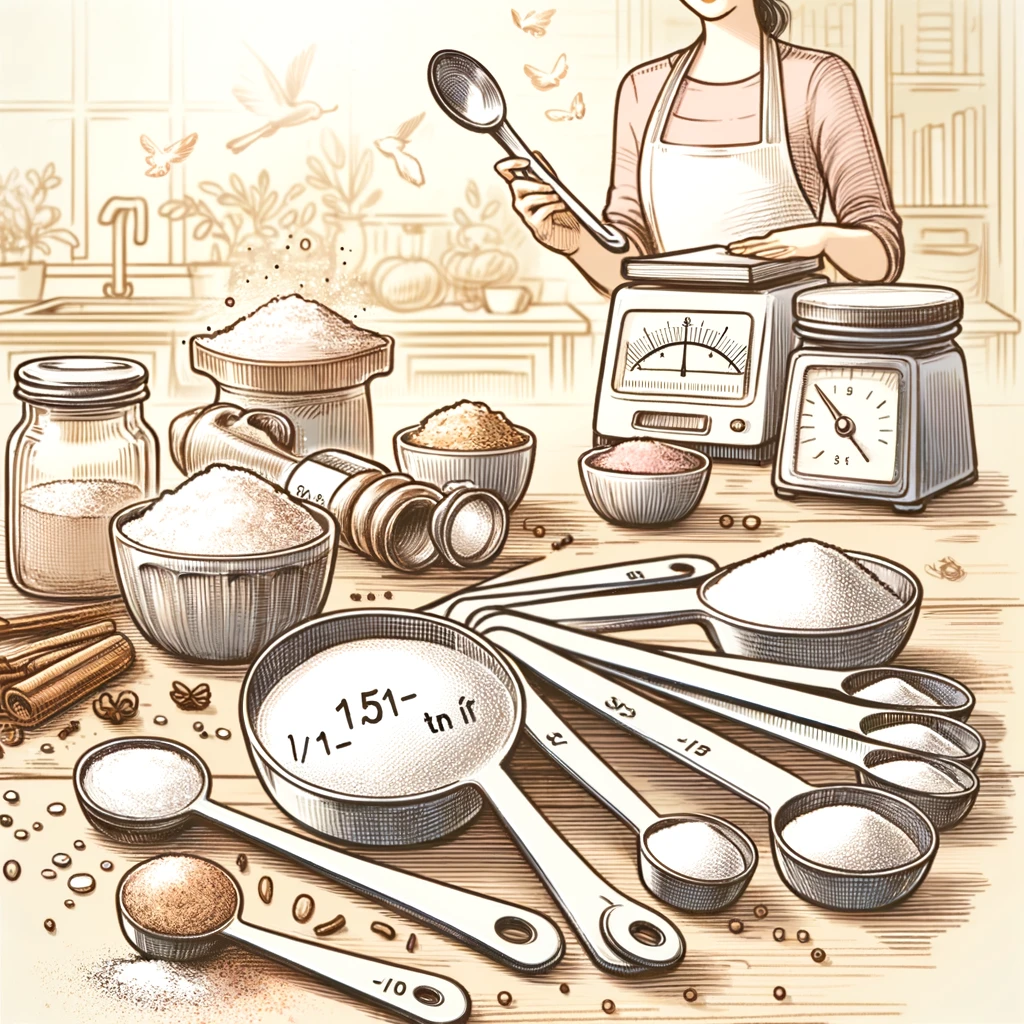In today’s world, the refrigerator is a cornerstone of the kitchen, a technology so integrated into our routines that we often stock its shelves without much thought. However, amidst this modern convenience, there lie several misconceptions about what should and shouldn’t be kept in its chilly confines. Many of us operate under the belief that the cooler temperatures of the fridge can prolong the life and enhance the safety of almost any product, from food items to beauty products and even certain types of electronics. This widespread presumption leads to the refrigerator being the default storage space for many items, disregarding the fact that not everything benefits from such an environment. The truth is, refrigeration isn’t a one-size-fits-all solution, and its misuse can sometimes lead to altered textures, dampened flavors, reduced efficacy, and other unintended consequences.
These misconceptions, often passed down through generations or picked up from unreliable sources, can affect more than just the quality of products — they can also impact our health, finances, and the environment. The misplacement of items in the refrigerator can lead to quicker spoilage, unnecessary waste, and, in some instances, potential health risks. In this comprehensive guide, we will debunk common myths and shed light on the surprising list of items that actually fare better outside the cold, aiming to inform and adapt our storage habits for safety, efficacy, and optimal enjoyment. Through understanding the science behind these principles, consumers can make more informed decisions, ensuring each product’s integrity and longevity.
Tomatoes: The Cold Ruins Their Flavor
Tomatoes, with their juicy texture and robust flavor, are an essential ingredient in countless dishes around the world. However, a common mistake made by many is storing these vibrant red fruits in the refrigerator. When subjected to cold temperatures, the delicate compounds that give tomatoes their distinct flavor begin to break down. Cold storage can negatively impact the volatile compounds in tomatoes, leading to a muted flavor profile, less aromatic presence, and even a mealy texture when consumed.

Moreover, refrigeration can hinder the ripening process of tomatoes. When kept at room temperature, tomatoes continue to ripen, developing a richer taste and more balanced acidity. The cold not only halts this natural process but can also alter the fruit’s cellular structure, leading to a less than ideal mouthfeel. For those who savor the rich, sun-kissed flavor of a perfectly ripe tomato, it’s best to keep them out of the fridge and on the countertop. Proper storage ensures that you get the most out of this versatile fruit, whether it’s in a salad, sandwich, or sauce.
Potatoes: Cold Turns Starch to Sugar
Potatoes, the beloved tubers adored for their versatility in the culinary world, have an intricate relationship with temperature when it comes to storage. Storing potatoes in the refrigerator might seem like a reasonable way to prolong their shelf life, but it has unintended consequences for the potato’s internal chemistry. The cold environment of a refrigerator accelerates the conversion of starches within the potato into sugars. This change not only affects the potato’s taste, giving it an unexpectedly sweet flavor, but it also influences the texture, making it grittier.
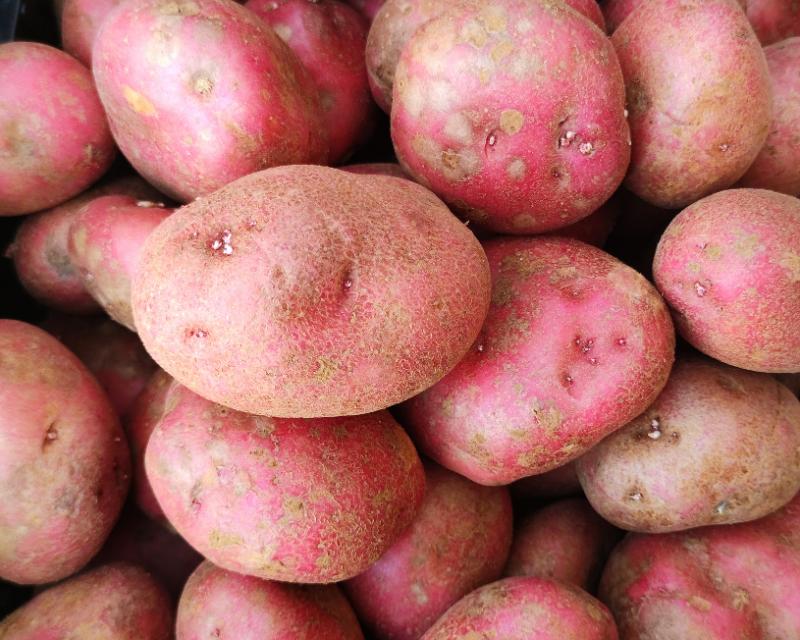
Beyond the altered taste and texture, these increased sugar levels can lead to another issue when cooking: browning. When potatoes with higher sugar content are fried or roasted, they tend to brown more quickly, often leading to overcooked exteriors while the insides remain undercooked. This can make for a challenging culinary experience when aiming for perfectly crispy fries or golden-brown roasted potatoes. For optimal flavor, texture, and cooking results, it’s recommended to store potatoes in a cool, dark place like a pantry, away from the damp and cold confines of the refrigerator.
Onions: Moisture Can Make Them Mushy
Onions, with their pungent aroma and ability to elevate countless dishes, are a staple in kitchens around the world. But as hardy as these bulbs seem, they have a nemesis: moisture. When onions are stored in the refrigerator, they are exposed to a damp environment. This moisture-laden atmosphere can seep into the onion layers, making them soft and compromising their crispness. Over time, this humidity can even cause the onions to become moldy or rot, significantly reducing their shelf life and rendering them unusable.
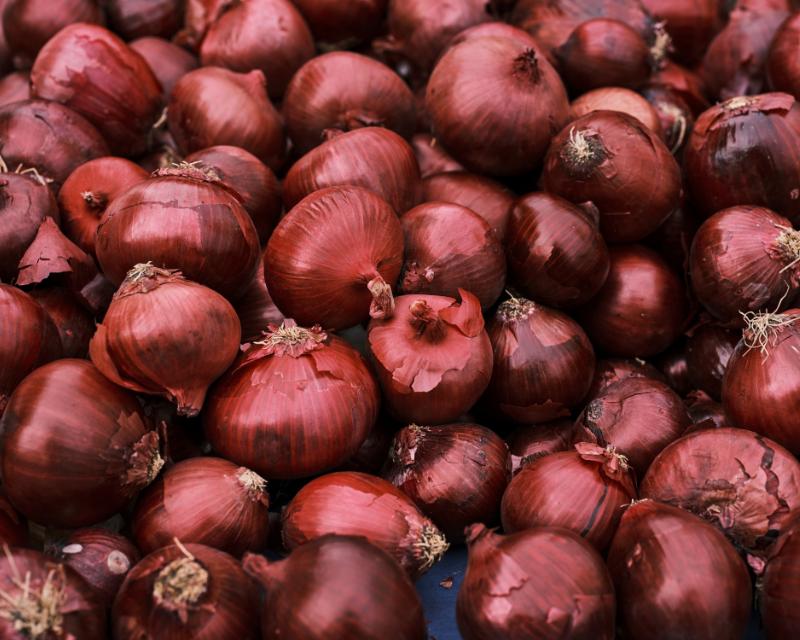
Furthermore, refrigeration can induce sprouting in onions, a process where green shoots begin to emerge from the bulb. Sprouting is a sign that the onion is past its prime, and while these shoots aren’t harmful, they can impart a bitter taste. To preserve the freshness, taste, and texture of onions, they should ideally be stored in a cool, dry place, preferably in a mesh bag or a basket that allows for air circulation. By keeping them out of the refrigerator and in well-ventilated conditions, onions can retain their crispness and robust flavor for longer durations.
Garlic: Refrigeration Diminishes Its Potency
Garlic, a revered culinary and medicinal treasure, is known for its intense flavor and aroma. This flavorful bulb can transform any dish, but storing it in the refrigerator can have detrimental effects on its potency. The cold environment inside a fridge can tamper with garlic’s natural enzymatic processes, leading to decreased allicin content, the compound responsible for garlic’s characteristic strong aroma and many of its health benefits. As a result, refrigerated garlic may lack the bold flavor and punch that chefs and home cooks seek.

In addition to losing its flavor potency, garlic stored in the refrigerator can also sprout green shoots more readily. While these sprouts are not harmful, they can have a somewhat bitter taste. Moreover, a refrigerated environment, particularly if the garlic is enclosed in a plastic bag or container, can foster mold growth due to trapped moisture. For garlic to maintain its rich taste, anti-microbial properties, and overall freshness, it’s best stored in a cool, dry place, ideally in a mesh bag or basket, ensuring good air circulation and keeping its robust characteristics intact.
Coffee: Cold Affects Its Aroma and Flavor
For many, coffee is not just a beverage but an essential ritual to kick-start the day. The rich aroma and flavor profile of coffee are the results of intricate chemical compositions, which can be easily disrupted when subjected to cold environments like a refrigerator. Storing coffee, especially ground coffee, in cold conditions can cause the aromatic oils within it to become dormant, leading to a loss of its robust fragrance and nuanced flavors. Furthermore, refrigeration exposes coffee to the risk of absorbing surrounding odors, compromising its pure taste with unwelcome flavors from neighboring foods.

Apart from the aroma and flavor degradation, moisture is another issue when coffee meets the cold. The refrigerator, with its damp environment, can introduce moisture to coffee beans or grounds. This moisture can deteriorate the quality of the coffee, making it stale and less vibrant in taste. For coffee lovers who seek a fresh and flavorful brew, it’s advisable to store coffee in an airtight container in a cool, dark place, away from the moisture and temperature fluctuations of the fridge. This ensures that every cup delivers the rich and aromatic experience that coffee enthusiasts cherish.
Honey: Crystalization Risk in Cold
Honey, nature’s liquid gold, has been cherished for millennia for its sweet taste and myriad health benefits. Its naturally long shelf life and resistance to spoilage make it a unique substance. However, one of the challenges honey can face is crystallization, where the liquid begins to solidify into a grainy texture. While crystallization doesn’t spoil the honey or diminish its quality, it does alter its texture and ease of use. Storing honey in the refrigerator exacerbates this process, causing it to crystallize at a faster rate due to the cold temperature, which promotes the formation of sugar crystals.

While some people might prefer crystallized honey for its spreadable texture, many desire the smooth, syrupy consistency of its liquid form. To keep honey in its liquid state for a more extended period, it’s best to store it at room temperature, away from direct sunlight in a cool, dry place. If honey does crystallize, it can easily be returned to its liquid state by placing its container in warm water until the crystals dissolve. By avoiding refrigeration, honey can maintain its beloved thick and flowing consistency, ready to sweeten and enrich our dishes and drinks.
Bread: Quickens Staling in the Fridge
Bread, a staple in many diets across cultures, has a comforting aroma and texture when fresh. Yet, a common misconception is that refrigerating bread can extend its freshness. In reality, storing bread in the refrigerator accelerates the staling process. This is because the cold environment causes the starch molecules in bread to recrystallize more quickly, leading to a dry, crumbly texture, even if the bread doesn’t show visible signs of mold or spoilage. What many perceive as the bread going “stale” is often this change in texture, not necessarily an indication that the bread has gone bad.
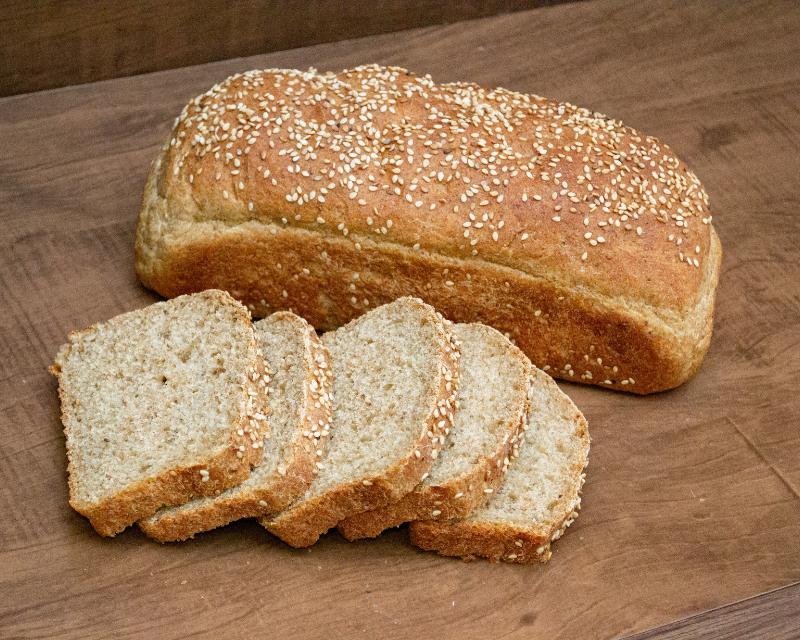
For those who wish to prolong the life of their bread without sacrificing its texture and taste, it’s better to store it at room temperature for short-term consumption. If longer storage is needed, freezing bread is a more viable option, as this effectively halts the staling process. When you’re ready to eat it, simply thaw and possibly toast to revive its warm, comforting character. In essence, to maintain the integrity of bread’s delightful softness and flavor, it’s best to keep it out of the fridge and either on the counter or in the freezer, depending on the intended duration of storage.
Basil and Other Fresh Herbs: Cold Wilt and Flavor Loss
Basil, with its fragrant leaves and vibrant green hue, is a favorite among culinary herbs. Along with other fresh herbs like cilantro and parsley, basil brings a burst of flavor and color to dishes. However, these delicate herbs can be quite sensitive to their environment, particularly cold temperatures. Storing basil and similar herbs in the refrigerator can lead to a rapid wilting of their leaves, turning them from bright and lively to dark and limp. The cold environment not only affects their texture but also their flavor. In the fridge, these herbs can lose their potency, resulting in a muted taste that lacks the zesty punch they’re known for.

To preserve the vitality and flavor of basil and other fresh herbs, it’s better to treat them like fresh flowers. Placing the stems in a jar or glass of water and keeping them at room temperature can extend their freshness. If they must be refrigerated, ensure they are wrapped loosely in a damp paper towel and placed in an open plastic bag to maintain some humidity without making the environment too wet. This approach helps strike a balance, keeping the herbs fresh and flavorful without the detrimental effects of cold-induced wilting and flavor loss.
Olive Oil: Refrigeration Makes It Cloudy
Olive oil, a cornerstone of Mediterranean cuisine, is celebrated for its rich, fruity flavor and numerous health benefits. This golden elixir is not just an ingredient but a culinary tradition passed down through generations. However, its quality and texture can be compromised when subjected to cold temperatures, like those inside a refrigerator. One of the most noticeable effects of cold on olive oil is its transformation from a liquid to a cloudy, semi-solid state. This cloudiness is caused by the solidification of certain fatty acids within the oil, changing its consistency and appearance.

While this change in texture doesn’t inherently degrade the quality of the oil or its flavor, it can be off-putting to some consumers, making them question its freshness or quality. Moreover, repeatedly solidifying and liquefying the oil by moving it in and out of the fridge can degrade its flavor over time. For optimal consistency and preservation of its robust taste, olive oil is best stored in a cool, dark place, away from direct sunlight and heat. A pantry or cupboard is ideal, ensuring the oil remains in its best state, ready to drizzle over salads, enhance dishes, or be used in cooking as needed.
Hot Sauce: Refrigeration Isn’t Necessary
Hot sauce, the fiery condiment that adds a kick to dishes worldwide, often finds itself relegated to the refrigerator door once opened. However, this common practice isn’t always necessary and can even be counterproductive. Most commercial hot sauces contain vinegar and preservatives, which create an acidic environment that naturally inhibits the growth of harmful bacteria. This acidity, combined with the capsaicin from chili peppers (which has antimicrobial properties), means that hot sauce has a surprisingly long shelf life even when stored at room temperature.

Keeping hot sauce in the refrigerator can actually mute its spiciness and alter its viscosity, making it thicker and less pourable. Cold temperatures can also dampen the sauce’s flavor profile, making it less pungent and vibrant when tasted. For those who want their hot sauce to retain its full flavor punch and optimal consistency, it’s best to store it in a pantry or kitchen cabinet. While some specific brands or homemade varieties might benefit from refrigeration, many commercial hot sauces are perfectly suited for room temperature storage, ensuring they’re always ready to spice up meals at a moment’s notice.
Melons: Better At Room Temperature
Melons, with their juicy flesh and refreshing taste, are a favorite summertime fruit. Whether it’s a sweet watermelon, a fragrant cantaloupe, or a creamy honeydew, these fruits offer hydration and flavor in every bite. However, there’s a misconception that they should be refrigerated immediately after purchase. While melons can be refrigerated once cut, storing whole melons in cold temperatures can hinder their ripening process and degrade their flavor. At room temperature, melons continue to develop their sugars and complex flavor profiles, resulting in a sweeter and more flavorful fruit when it’s finally time to cut into them.

Beyond flavor development, storing melons at room temperature can also preserve their nutrient content. Cold temperatures can degrade certain antioxidants and vitamins present in melons. Once a melon is cut, refrigeration becomes essential to prevent microbial growth and maintain freshness. But for whole, uncut melons, it’s best to leave them on the countertop or in a cool pantry. This allows them to retain their full nutrient potential and ensures that when you finally slice them open, you’re greeted with the most flavorful and juicy experience possible.
Avocados: Cold Delays Ripening
Avocados, often dubbed as “nature’s butter”, are not only delectable but also packed with a myriad of health benefits. Their rich content of monounsaturated fats, fiber, and vital nutrients like potassium have made them a popular choice among health enthusiasts. However, when it comes to storage, these green gems can be a bit tricky. A common mistake is placing unripe avocados in the refrigerator, assuming it’s the best way to preserve them. In reality, cold temperatures can significantly delay the ripening process of avocados. This is because the cold inhibits the enzymes responsible for breaking down the cell walls and converting the fats and starches, processes critical to the ripening of avocados.

From a health perspective, delaying the ripening of avocados can mean missing out on their peak nutrient availability. When avocados are perfectly ripe, they not only taste better but also offer maximum bioavailability of their nutrients, making them more beneficial for consumption. Furthermore, according to some studies, certain phytonutrients in avocados, like carotenoids, are better absorbed when the fruit is fully ripe. Hence, for those looking to make the most of the health benefits avocados offer, it’s advisable to store unripe ones at room temperature. Once ripened, they can be moved to the refrigerator if not consumed immediately, to maintain their texture and prevent over-ripening.
Bananas: Browning and Texture Issues
Bananas, with their sweet taste and portable nature, are a popular fruit globally. Rich in potassium, dietary fiber, and essential vitamins, bananas offer not only a quick energy boost but also numerous health benefits. However, when it comes to storage, placing them in the refrigerator can create several issues. Cold temperatures cause the cell walls of bananas to break down more rapidly, leading to softer and mushier fruit. Additionally, the cold can cause the skin to turn brown or black prematurely, even if the flesh inside remains relatively unaffected. This browning is a result of the polyphenol oxidase enzyme reacting with oxygen, a process exacerbated by cold temperatures.

From a health standpoint, while the browning itself isn’t harmful, it might make the fruit less appealing, leading to potential wastage of a nutritious food source. Moreover, some studies suggest that fully ripened bananas, exhibiting brown spots on their skin, produce a substance called Tumor Necrosis Factor (TNF), which has potential anti-cancer properties. Refrigerating them might interfere with this natural ripening process and the associated health benefits. Therefore, for those who want to get the most out of their bananas, both in terms of texture and potential health advantages, it’s best to let them ripen at room temperature. Once they’ve achieved the desired ripeness, they can be refrigerated to prolong their edibility, but with the understanding that texture changes and browning may occur.
Winter Squashes: Cold Impacts Texture
Winter squashes, including varieties like butternut, acorn, and spaghetti squash, are celebrated for their rich, earthy flavors and dense, hearty textures. They are a source of essential vitamins, minerals, and antioxidants that can promote overall health. However, when it comes to storage, these robust vegetables are often mistakenly stored in the cold confines of a refrigerator, which can adversely affect their texture and flavor. In cold temperatures, the starches in winter squashes can begin to convert to sugars. While this might seem like a boon for sweetness, it can result in an undesirable change in the squash’s overall texture, making it less firm and more watery when cooked.
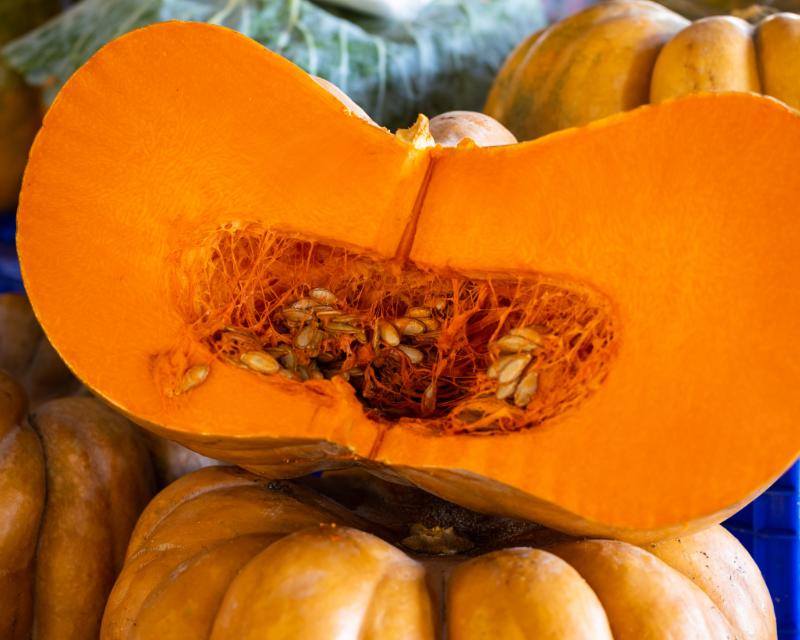
From a health perspective, maintaining the integrity of winter squashes’ texture is not just about culinary preference. The dense texture of these squashes, when cooked, allows for a slower digestion, leading to a more sustained release of sugars into the bloodstream. This can be beneficial in managing blood sugar levels, providing a steady source of energy without causing spikes. Additionally, the fibrous content, essential for gut health, can be altered when the texture is compromised. Therefore, for optimal health benefits and culinary experience, it’s advisable to store winter squashes in a cool, dry place outside the refrigerator. This ensures that they retain their natural texture and nutrient profile, ready to be transformed into nourishing meals when needed.
Nail Polish: Cold Affects Consistency
Nail polish, a favorite cosmetic product for many, is designed to provide a vibrant and lasting sheen to nails. However, the consistency and efficacy of nail polish can be significantly affected by storage conditions, particularly cold temperatures. It’s not uncommon for people to think that storing nail polish in the refrigerator can extend its shelf life. While cold might seem like a preserving agent, for nail polish, it can lead to increased viscosity, making the polish thicker and harder to apply evenly. The solvents within nail polish, responsible for maintaining its liquid consistency, can react adversely to cold temperatures, leading to separation or polymerization of ingredients.

From a health perspective, while nail polish is not ingested, its consistent application on nails does matter. A nail polish with altered consistency due to cold storage can lead to uneven application. Uneven layers might chip or peel more easily, leading to increased reapplication or exposure to the solvents when removing and reapplying the polish. Frequent exposure to these chemicals, especially in poorly ventilated areas, can be harmful over time, as some solvents might be absorbed through the nail bed or inhaled. Therefore, for optimal performance and to reduce potential health risks associated with frequent polish application, it’s best to store nail polish in a cool, dry place at room temperature, away from direct sunlight and extreme temperatures.
Cured Meats: Cold Can Diminish Flavor
Cured meats, ranging from salamis to prosciuttos, have been enjoyed for centuries and are prized for their rich, concentrated flavors. These flavors are the result of a careful curing process where the meat is seasoned, and either air-dried or smoked. The curing not only imparts a unique flavor but also acts as a preservation method. Yet, there’s a misconception that all cured meats should always be refrigerated. While refrigeration can extend the shelf life of many cured products, it can also mute the flavors and aromas that are signature to these delicacies. Cold temperatures can cause the fats within the meat to solidify, leading to a less expressive taste profile when consumed straight from the fridge.

From a health standpoint, it’s essential to balance flavor preservation with safety. Cured meats are often high in salt and nitrates, which act as preservatives. These ingredients can inhibit the growth of harmful bacteria, making some cured meats safe for room temperature storage for certain periods. However, prolonged exposure to warmer temperatures can increase the risk of bacterial growth in meats with lower salt contents. On the flip side, continuously consuming cold cured meats with muted flavors might lead individuals to consume larger quantities to achieve the desired taste, inadvertently increasing their intake of salt and fats. For an optimal balance of safety and flavor, it’s recommended to store cured meats in the fridge but to allow them to come to room temperature before consumption, letting their rich flavors shine through.
Whole Spices: Cold Reduces Aromatic Oils
Whole spices, from black peppercorns to cinnamon sticks, are treasured in culinary traditions around the world for their ability to elevate dishes with complex flavors and aromas. These spices owe their distinctive characteristics to the aromatic oils they contain. However, storing whole spices in the refrigerator can compromise these essential oils. Cold temperatures can cause condensation to form within spice containers, leading to a decrease in the potency of these oils and, over time, can also make the spices stale or moldy. This not only diminishes the culinary experience but also impacts the potential health benefits derived from these spices.
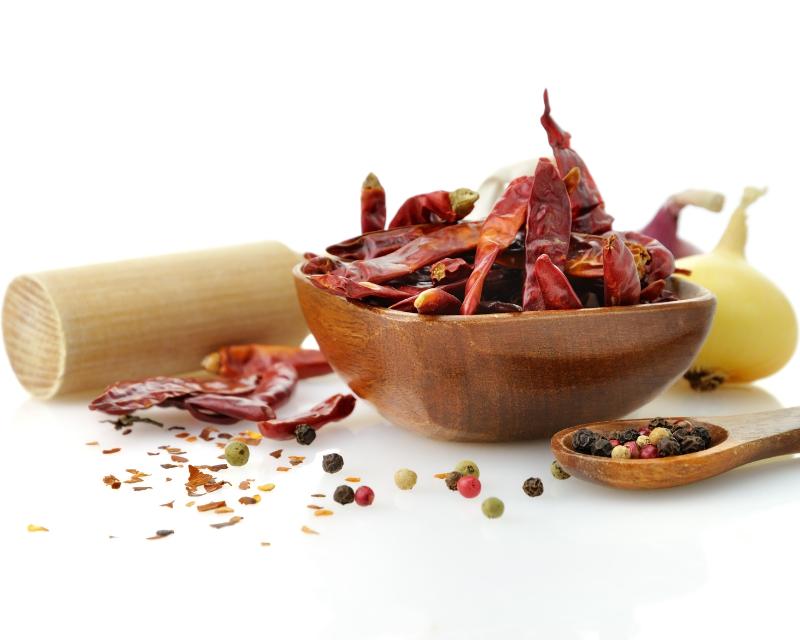
From a health standpoint, many whole spices are not just flavor enhancers but also potent sources of antioxidants, anti-inflammatory agents, and other beneficial compounds. For example, curcumin, found in turmeric, has been studied for its potential anti-inflammatory and antioxidant properties, while black pepper contains piperine, a compound known to enhance nutrient absorption. By storing spices in cold conditions and reducing the potency of their aromatic oils, we might also be diminishing their therapeutic benefits. To ensure that whole spices retain their flavor and medicinal qualities, they should be stored in a cool, dry place away from direct sunlight, but outside the confines of the refrigerator. Proper storage ensures that when these spices are used, they deliver not only on taste but also on their potential health-promoting properties.
Chocolate: Can Form Sugar Bloom in Cold
Chocolate, a beloved treat for many, is a delicate balance of cocoa solids, cocoa butter, and often, sugar. Storing chocolate in the refrigerator might seem like a good idea to keep it firm, especially in warmer climates, but it can introduce the risk of ‘sugar bloom’. When chocolate is exposed to cold and then returned to room temperature, condensation can form on its surface. This moisture can dissolve some of the sugar in the chocolate. As the moisture evaporates, the dissolved sugar crystallizes on the surface, leaving a grainy, white haze known as sugar bloom. Not only does this affect the appearance and texture of the chocolate, making it less smooth when eaten, but it can also subtly alter the taste.

From a health perspective, while sugar bloom doesn’t make chocolate unsafe to eat, it might influence consumption patterns. The altered texture and appearance might make the chocolate less satisfying, leading some individuals to consume more in search of that familiar rich experience. Furthermore, chocolate, especially dark varieties, contains flavonoids, which have been linked to various health benefits, including improved heart health and reduced inflammation. Altering the composition or structure of chocolate through temperature changes might impact the availability and absorption of these beneficial compounds. For those who want to preserve both the sensory qualities and the potential health benefits of their chocolate, it’s best to store it in a cool, dry place away from direct sunlight and extreme temperatures, ensuring it remains a treat in every sense.
Certain Medications: Efficacy May Be Altered
Medications are formulated with precise ingredients and conditions in mind to ensure their efficacy and stability. While some medications require refrigeration, many others are meant to be stored at room temperature. Exposing these drugs to cold temperatures, like those in a refrigerator, can sometimes alter their physical or chemical properties. For instance, cold can cause some liquid medications to become too viscous or even solidify. Tablets or capsules may be affected by condensation, leading to degradation of the active ingredient or the formation of mold. Such alterations can reduce the medication’s efficacy, meaning it may not provide the intended therapeutic effect or, in some cases, could lead to unexpected side effects.

From a medical standpoint, the proper storage of medications is crucial. According to the U.S. Pharmacopeia (USP) guidelines, most medications should be stored at controlled room temperature unless otherwise specified by the manufacturer or pharmacist. Incorrect storage can not only impact the drug’s efficacy but also its safety profile. For patients relying on medications for chronic conditions or life-threatening illnesses, any reduction in efficacy could have significant health implications. It’s essential to always consult the storage guidelines provided on the medication’s packaging or consult with a healthcare professional about the appropriate storage conditions. Ensuring medications are stored correctly helps guarantee their effectiveness and safety for the patients relying on them.
Peanut Butter: Cold Makes It Hard and Dry
Peanut butter, a staple in many households, is known for its creamy (or crunchy, depending on preference) texture and rich flavor. When stored in the refrigerator, peanut butter undergoes a noticeable transformation. The cold temperature causes the natural oils in the peanut butter to solidify, making the spread hard and challenging to stir. Over time, this can also lead to the oil separating from the solid components, resulting in a dry, crumbly texture. The refrigerated environment doesn’t just alter the texture but can also mute the flavor of the peanut butter, making it less enjoyable to consume.
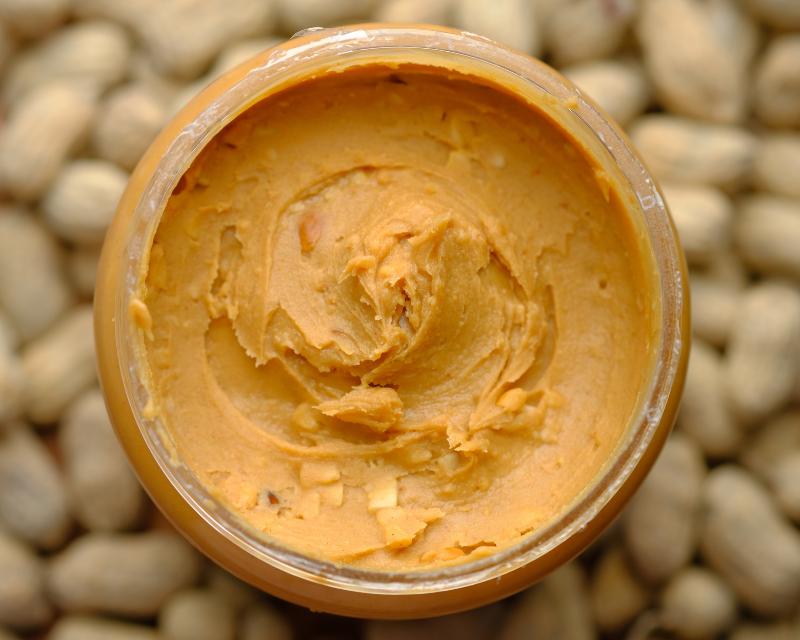
While peanut butter’s main concern in cold storage is a sensory one, there’s a potential health aspect to consider. Peanut butter is a source of protein, healthy fats, and various vitamins and minerals, such as magnesium and vitamin E. When consumed in its intended state, it can offer satiety and nutritional benefits. However, if the altered texture from cold storage leads to reduced consumption or causes individuals to opt for other less nutritious spreads, they might miss out on these benefits. Furthermore, struggling with hard, refrigerated peanut butter can increase the likelihood of bread tearing, potentially leading to increased food waste. While not a direct health risk, optimal nutrition practices advocate for the efficient use of food sources and reduction of waste. It’s generally recommended to store natural peanut butter at room temperature for regular consumption and to ensure its best consistency and flavor. If oil separation is a concern, simply stirring and then refrigerating can be a solution for longer storage periods.
Pumpkin and Other Gourds: Best Outside the Fridge
Pumpkins and other gourds, celebrated for their versatility in both culinary and decorative realms, have specific storage needs to maintain their freshness and nutritional value. When stored in the refrigerator, the cold environment can negatively affect their texture, potentially leading to soft spots and early rotting. Additionally, prolonged cold storage can cause the gourds to become watery when cooked, altering their natural rich flavor and consistency. Ideally, these gourds should be kept in a cool, dry environment outside the fridge to ensure they retain their texture, flavor, and longevity.

From a health perspective, pumpkins and similar gourds are packed with nutrients. They are a rich source of beta-carotene, a precursor to vitamin A, which is crucial for vision, the immune system, and skin health. Alongside, these gourds also provide dietary fiber, vitamin C, and various antioxidants. Storing them in conditions that lead to early spoilage not only reduces the time frame within which their nutritional benefits can be reaped but may also lead to the growth of mold or bacteria, which can be harmful if consumed. Research indicates that the beta-carotene content, in particular, is best preserved when gourds are stored at room temperature (Source: *Journal of Agricultural and Food Chemistry*). Therefore, to maximize their health benefits and culinary potential, it’s best to store pumpkins and other gourds in a well-ventilated space, away from direct sunlight and moisture, and outside the confines of the refrigerator.
Soy Sauce: Cold Isn’t Required
Soy sauce, a condiment with ancient origins, is a product of fermenting soybeans with wheat, salt, and specific fungal cultures. Due to its high salt content and the fermentation process it undergoes, soy sauce naturally possesses preservative qualities that prevent spoilage for extended periods. When stored in the refrigerator, soy sauce can become overly viscous and thick, making it harder to pour. Moreover, the cold environment might also mute some of the nuanced flavors that come from its complex fermentation process. Most commercial soy sauces indicate on their labels that refrigeration isn’t necessary, suggesting that they can maintain their quality and safety when stored at room temperature.

From a health standpoint, soy sauce is rich in certain bioactive compounds resulting from its fermentation process, including antioxidants and small peptides that may have health benefits. Some research suggests that these compounds can have potential protective effects against cardiovascular diseases (Source: *Journal of Food Science*). Cold storage could potentially affect the stability and availability of these compounds, although the impact might be minimal. Additionally, there’s a convenience and consumption pattern to consider: if the altered texture or muted flavor caused by refrigeration reduces an individual’s inclination to use soy sauce, they might miss out on the potential health benefits associated with its moderate consumption. For maintaining its best consistency, flavor, and potential health benefits, soy sauce can be confidently stored in a cool, dark pantry or cupboard.
Peanut and Nut Oils: Can Become Thick and Cloudy
Peanut and other nut oils are favored in many culinary traditions for their unique flavors and high smoke points, making them suitable for various cooking techniques, including frying. However, when subjected to cold temperatures, as in a refrigerator, these oils can undergo changes. The cold can cause the oils to solidify or become viscous, leading to a cloudy appearance. While this change in texture and appearance does not necessarily indicate spoilage, it can make the oil harder to pour and can sometimes alter its flavor profile, especially when the oil returns to a liquid state at room temperature.
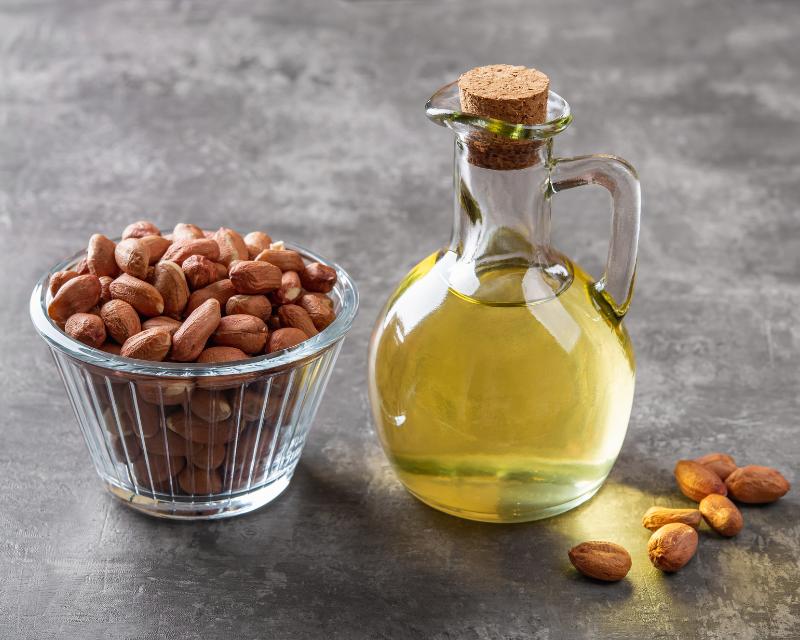
From a health perspective, peanut and nut oils are rich in unsaturated fats, which have been linked to numerous health benefits, including promoting heart health and reducing inflammation (Source: *Journal of Nutrition*). Unsaturated fats are sensitive to environmental conditions, and drastic temperature changes, like refrigeration, might influence the stability and quality of these fats over time. While the impact of refrigeration on the health properties of nut oils is not entirely clear, maintaining the oil’s original state and flavor is crucial for maximizing its nutritional benefits. For those who use these oils as a dietary source of unsaturated fats, preserving their natural state ensures they are consuming the oil as intended, with all its potential health benefits intact. Thus, to keep their consistency, flavor, and health properties, peanut and nut oils are best stored in a cool, dark place, away from direct sunlight and extreme temperatures, rather than in the refrigerator.
Pepperoni Pizza: A Popular Myth Busted!
Pepperoni pizza is undoubtedly one of the most beloved pizza varieties worldwide. A common myth is that leftover pizza, especially one topped with meats like pepperoni, doesn’t need refrigeration and can be left out overnight. This belief possibly stems from the notion that the high salt content in pepperoni and the acidic tomato sauce act as preservatives, making the pizza safe for consumption even after hours at room temperature. However, this myth can be dangerous. According to the USDA’s Food Safety and Inspection Service, perishable foods, including pizza, should not be left out of the refrigerator for more than two hours (or one hour if temperatures are above 90°F/32°C). Beyond this timeframe, the risk of bacterial growth increases significantly, elevating the chances of foodborne illnesses.

From a medical perspective, consuming food that has been left out for extended periods can lead to various illnesses, ranging from mild digestive upsets to severe cases of food poisoning. Bacteria such as *Salmonella*, *E. coli*, and *Listeria* can flourish in foods left out, especially those with protein sources like cheese and meat. A study published in the *Journal of Food Protection* highlighted the risks associated with consuming food that has been improperly stored, underscoring the importance of adhering to safe food practices. While the occasional late-night slice might not always lead to adverse effects, it’s essential, especially for vulnerable populations like the elderly, children, and those with compromised immune systems, to ensure leftovers are stored safely in the refrigerator. Busting the myth and prioritizing safety ensures that the joy of savoring a slice doesn’t come with unwanted medical consequences.
Some Natural Cosmetics: Refrigeration Can Alter Texture
Natural cosmetics, which often eschew synthetic preservatives in favor of organic and plant-based ingredients, have gained significant popularity in recent years due to their perceived gentleness and eco-friendly nature. While some believe that refrigerating these products can extend their shelf life, doing so can sometimes alter the texture and consistency of the product. For instance, certain natural creams or balms might become too hard or solidify when cooled, making them difficult to apply. Conversely, products that rely on delicate emulsions can separate into their individual components when subjected to cold temperatures, rendering them less effective or even unusable.
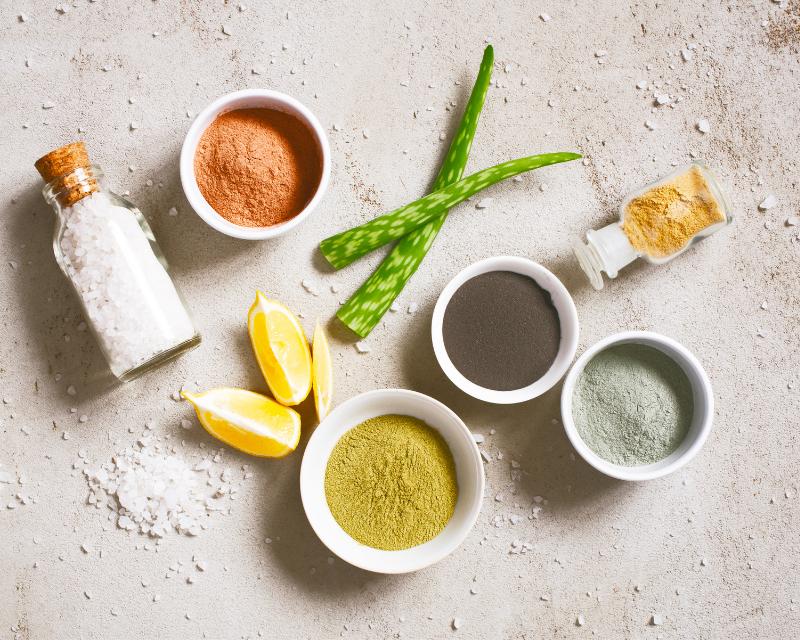
From a medical standpoint, the stability and efficacy of cosmetics can have implications for skin health. If refrigeration causes a product to separate or change texture, the intended benefits, such as moisturization, protection, or treatment, might not be delivered evenly or effectively. This inconsistency can lead to inadequate skin care, potentially resulting in dryness, irritation, or other skin issues. Furthermore, if the altered texture causes users to apply more of the product than necessary, there could be a higher risk of skin reactions, especially for those with sensitive skin. According to a review in the *Journal of Clinical and Aesthetic Dermatology*, the stability and homogeneity of skincare products play a crucial role in their overall efficacy and safety. For those considering storing natural cosmetics in the fridge, it’s essential to consult the product’s label or manufacturer’s guidelines and to monitor any changes in the product’s consistency or performance to ensure optimal skin health and product effectiveness.
Dried Fruits: Refrigeration Can Sap Their Moisture
Dried fruits, cherished for their concentrated flavors and extended shelf life, are a product of carefully controlled dehydration processes. This removal of moisture not only gives them their unique texture but also inhibits the growth of spoilage-causing microorganisms. When stored in the fridge, the cold and often humid environment can inadvertently reintroduce moisture to these fruits, causing them to lose their distinct texture and potentially making them susceptible to mold growth. This moisture migration can lead to a shortened shelf life, and even more concerning, it can provide a conducive environment for harmful bacteria and fungi that thrive in damp conditions.
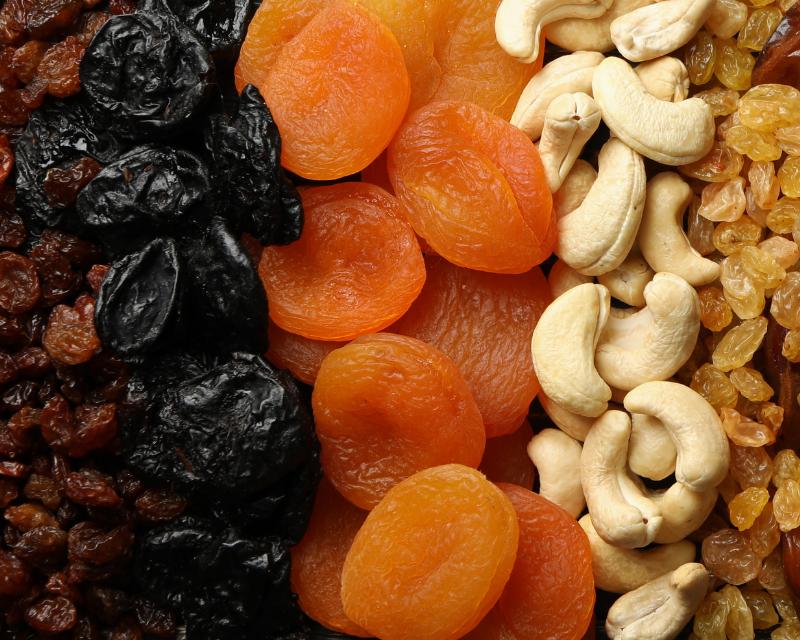
From a medical perspective, consuming mold-contaminated foods, including moldy dried fruits, can be harmful. Ingesting mold can lead to allergic reactions, respiratory issues, and in some instances, exposure to mycotoxins – toxic compounds produced by certain molds. According to a study published in the Journal of Food Protection, mycotoxin contamination in dried fruits is a notable concern. For the sake of both taste and health, it’s best to store dried fruits in a cool, dry place outside the refrigerator, ensuring they remain safe, delicious, and free from unwanted moisture.
Tropical Fruits (like Pineapple and Papaya): Cold Affects Their Maturation
Tropical fruits, such as pineapples and papayas, thrive in warmer climates and are naturally adapted to mature under conditions far removed from the chill of a refrigerator. When these fruits are subjected to cold temperatures before they’ve fully ripened, their natural maturation process can be interrupted or stunted. This can result in uneven ripening, diminished flavor profiles, and a texture that is less than desirable. Furthermore, cold storage can induce chilling injuries in tropical fruits, leading to surface pitting, internal browning, and increased vulnerability to post-harvest diseases.

From a medical standpoint, properly ripened tropical fruits not only offer superior taste but also optimal nutrient content. For instance, papayas are renowned for their rich vitamin C and enzyme papain content, which can be compromised if the ripening process is disturbed. A study from the *Journal of Agricultural and Food Chemistry* highlights the importance of post-harvest handling on the nutritional and functional quality of tropical fruits. Subjecting these fruits to inappropriate temperatures can undermine their health benefits. To ensure you’re getting the best taste and maximum nutritional value from your tropical fruits, store them at room temperature until they’ve reached their peak ripeness.
Freshly Baked Pastries: Cold Can Make Them Go Stale Faster
The allure of freshly baked pastries lies in their soft interiors contrasted with a crisp exterior, a delightful textural experience that can be rapidly compromised when subjected to refrigeration. The science behind this is rooted in the retrogradation of starch molecules present in the pastries. When baked goods are placed in the fridge, the cold temperature accelerates this process, causing the starch molecules to recrystallize faster. This leads to a quicker loss of moisture, turning that once soft and fluffy interior into a firm and dry texture, essentially fast-tracking the staling process.

While the primary concern with refrigerating pastries is the alteration of texture and taste, there’s also a more subtle medical consideration. Starch retrogradation can lead to an increase in resistant starch content, which, when consumed in large amounts, can cause digestive discomfort in some individuals. A study in the *Journal of Cereal Science* delved into the implications of starch retrogradation in baked products, underscoring its effect on texture and potential dietary consequences. To preserve the intended texture and ensure optimal digestibility, it’s advisable to store freshly baked pastries in a cool, dry place, preferably in airtight containers, and away from the cold confines of the refrigerator.
Pickles: Not All Need to be Refrigerated
Pickles, with their tangy, briny flavor, have been a staple in many cultures for centuries. Beyond their taste, pickles also offer potential health benefits, primarily due to the fermentation process many undergo. This process can introduce beneficial probiotics, or live bacteria, that can promote a healthy gut flora. However, there’s a common misconception that all pickles need to be stored in the refrigerator. In fact, many commercially produced pickles, which are often pasteurized, are packed in a vinegar solution that acts as a preservative. These pickles can be safely stored at room temperature until opened, thanks to the acidic environment that inhibits harmful bacterial growth.

From a health standpoint, the refrigeration of certain types of pickles, particularly those labeled as “live” or “raw,” can be essential for maintaining their probiotic benefits. Cold temperatures can slow down or halt the activity of these beneficial bacteria, preserving their numbers and potential health benefits. However, for many commercially processed pickles that don’t contain live cultures, refrigeration is more about preserving texture and crunch rather than any significant health considerations. It’s crucial to read labels and understand the type of pickles in question. While some can stand proudly on the pantry shelf, others, particularly those teeming with beneficial bacteria, might benefit from the chill of the fridge to retain their health-boosting properties.
Hard Cheeses (like Parmesan): Fridge Moisture Can Dull Their Flavor
Cheeses like Parmesan, aged to perfection, owe their rich flavors and crystalline textures to the meticulous aging process. Hard cheeses are naturally low in moisture, and this dehydration is a significant factor in concentrating their flavors. However, refrigerators, despite their cold temperatures, often have a higher humidity level. Storing hard cheeses in such an environment can introduce them to excess moisture, which in turn can mute their flavors and alter their intended textures. Beyond the sensory experience, this added moisture can also provide a breeding ground for unwanted mold and bacteria, which can compromise the quality and safety of the cheese.
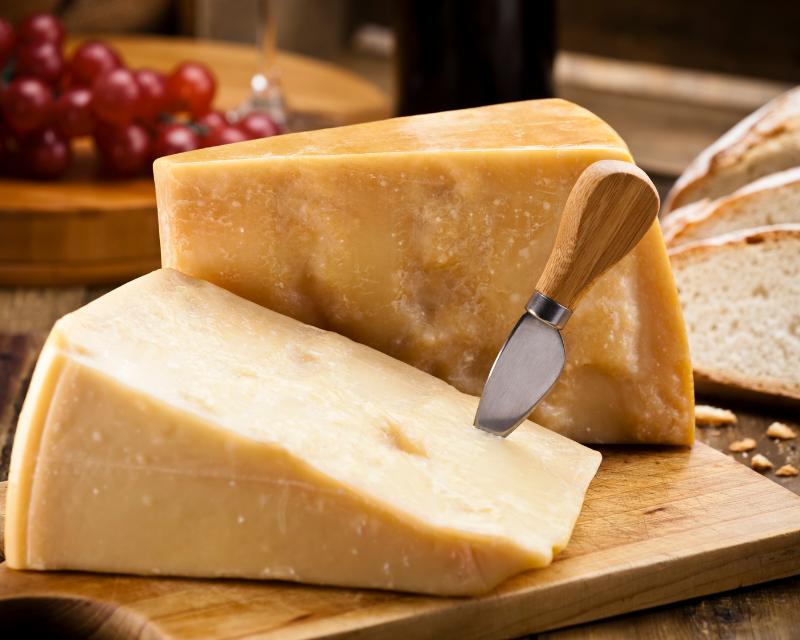
From a medical perspective, consuming mold-contaminated cheese can be harmful. While some molds used in cheese production are safe and even beneficial, unintended mold growth can produce mycotoxins that can pose health risks when ingested. A publication in the *International Journal of Food Microbiology* emphasized the potential dangers of mycotoxin-producing molds in dairy products. Therefore, to ensure the longevity, taste, and safety of hard cheeses, it’s recommended to store them wrapped in wax paper or parchment, placed in a loose-fitting bag to allow for minimal air circulation, and kept in the cooler parts of your kitchen or pantry, rather than the damp environment of a refrigerator.
Stone Fruit: Cold Can Interrupt Ripening
Stone fruits, encompassing cherries, peaches, plums, nectarines, and apricots, are celebrated for their juicy, sweet flesh and fragrant aromas. These fruits typically ripen after being picked, undergoing a process where their sugars develop, and their flavors intensify. However, placing unripe stone fruits in the refrigerator can disrupt this natural ripening process. The cold environment can retard the action of the enzymes responsible for breaking down complex carbohydrates into simpler sugars, leading to fruits that are less sweet and can even develop a mealy texture. This not only impacts the sensory enjoyment of these fruits but can also have nutritional implications.
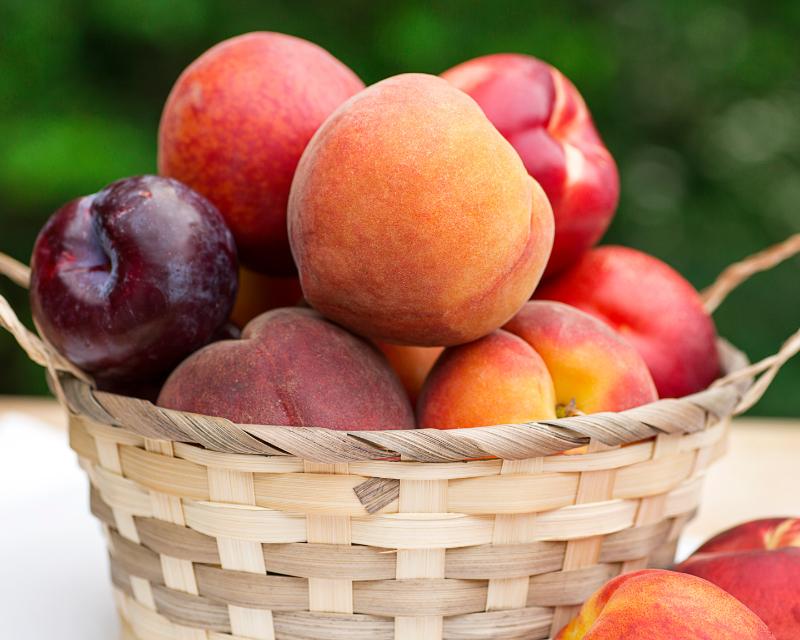
From a health perspective, a fully ripened stone fruit not only offers a sweeter taste but also has a heightened level of antioxidants, vitamins, and phytochemicals. For instance, research has shown that ripe fruits have higher concentrations of beneficial compounds like carotenoids and phenolic acids, which can offer protective effects against chronic diseases, including heart disease and certain cancers. By preventing these fruits from achieving their peak ripeness, we might be missing out on their maximum health benefits. For best results, stone fruits should be allowed to ripen at room temperature. Once they’ve reached the desired ripeness level, they can then be refrigerated to maintain their freshness and extend their shelf life, ensuring that both their flavor and nutritional potential are optimized.
Dried Beans and Lentils: The Cold Can Make Them Tougher to Cook
Dried beans and lentils are pantry staples, celebrated not only for their nutritional value but also for their long shelf life. Their dried state ensures low moisture content, which is essential for preserving their quality and preventing microbial growth. However, storing them in the refrigerator can introduce unintended moisture, leading to potential issues. This exposure to a cold, sometimes humid environment can make the beans and lentils tougher, subsequently requiring longer cooking times. It can also result in uneven cooking, with some beans remaining hard even after extended boiling or pressure cooking, a phenomenon often attributed to the cell wall structures becoming more rigid in low temperatures.

On the medical front, while the primary concerns regarding the mis-storage of dried beans and lentils are culinary, there are some potential health implications to consider. Beans, especially kidney beans, contain a natural toxin called lectin. If these beans aren’t cooked thoroughly due to their toughened state from refrigeration, they might retain higher levels of this toxin. According to a report in the *Journal of the Science of Food and Agriculture*, improperly cooked beans can lead to symptoms like nausea, vomiting, and diarrhea. Ensuring beans are stored in a dry, room-temperature environment and properly cooked can mitigate such risks, emphasizing the importance of correct storage and preparation.
Proper Storage for Longer Shelf Life
The refrigerator, while an invaluable tool in modern kitchens, isn’t the panacea for all storage needs. As illustrated throughout the article, many foods, household items, and even cosmetics may suffer adverse changes in flavor, texture, and efficacy when subjected to cold temperatures. In some cases, the misbelief in universal refrigeration can even pose health risks, as certain items can become breeding grounds for bacteria or lose their intended health benefits when not stored optimally. Recognizing and understanding the specific storage needs of different products is essential not only for preserving their quality but also for maximizing their longevity and benefits.
From a medical perspective, the importance of proper storage extends beyond mere taste or utility. The risk of foodborne illnesses, reduction in nutritional or health benefits, and the compromised efficacy of skincare or medical products are all potential consequences of improper storage. Research consistently emphasizes the need for proper food handling and storage to prevent health issues. A review in the *Journal of Food Science and Technology* underscores the direct relationship between food storage conditions and the preservation of its nutritional quality. By adopting informed storage practices based on both culinary and medical knowledge, consumers can ensure that they are getting the most out of their products in terms of flavor, quality, efficacy, and health benefits. In essence, knowing where and how to store items can be as crucial as understanding their uses.

